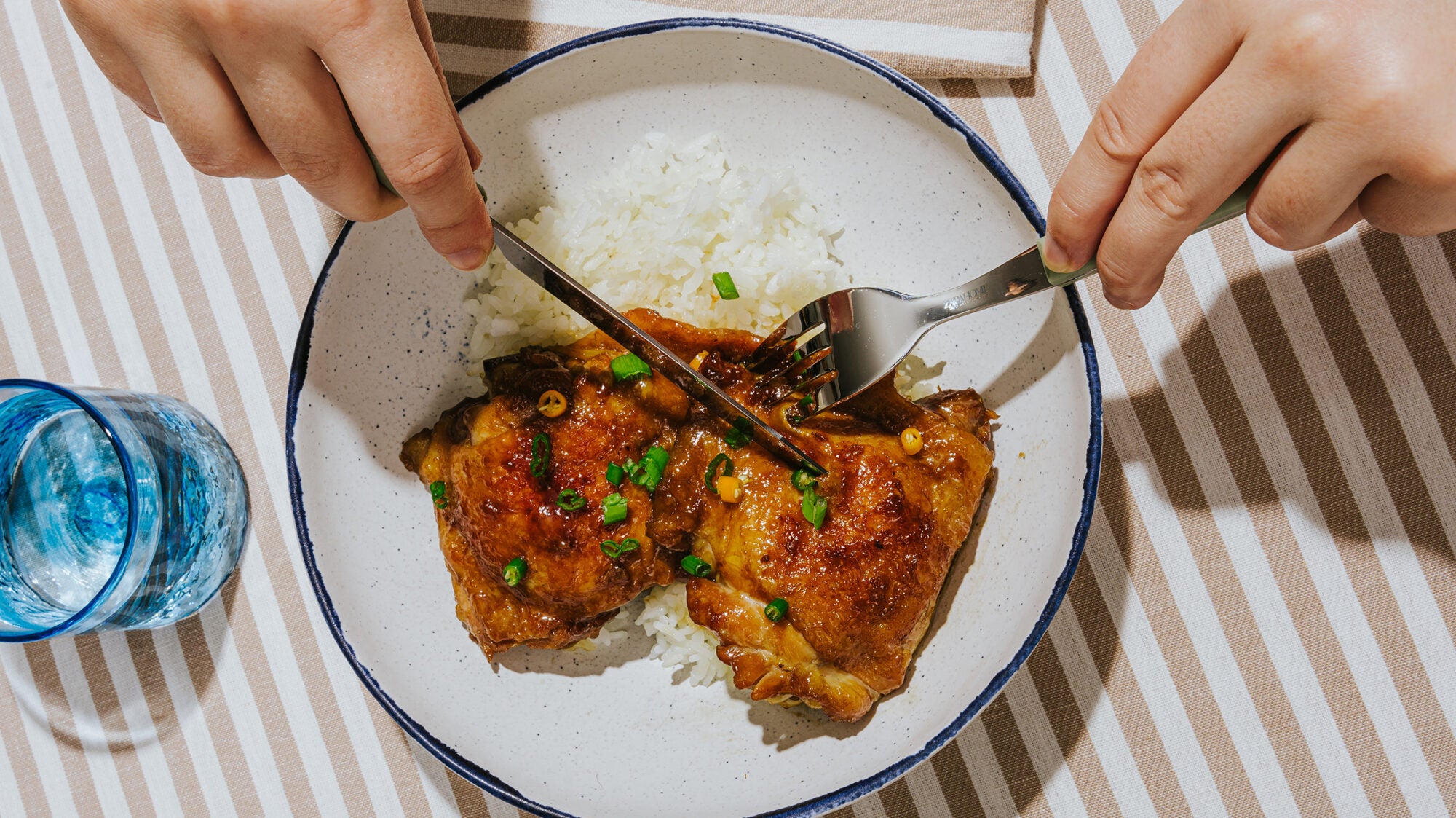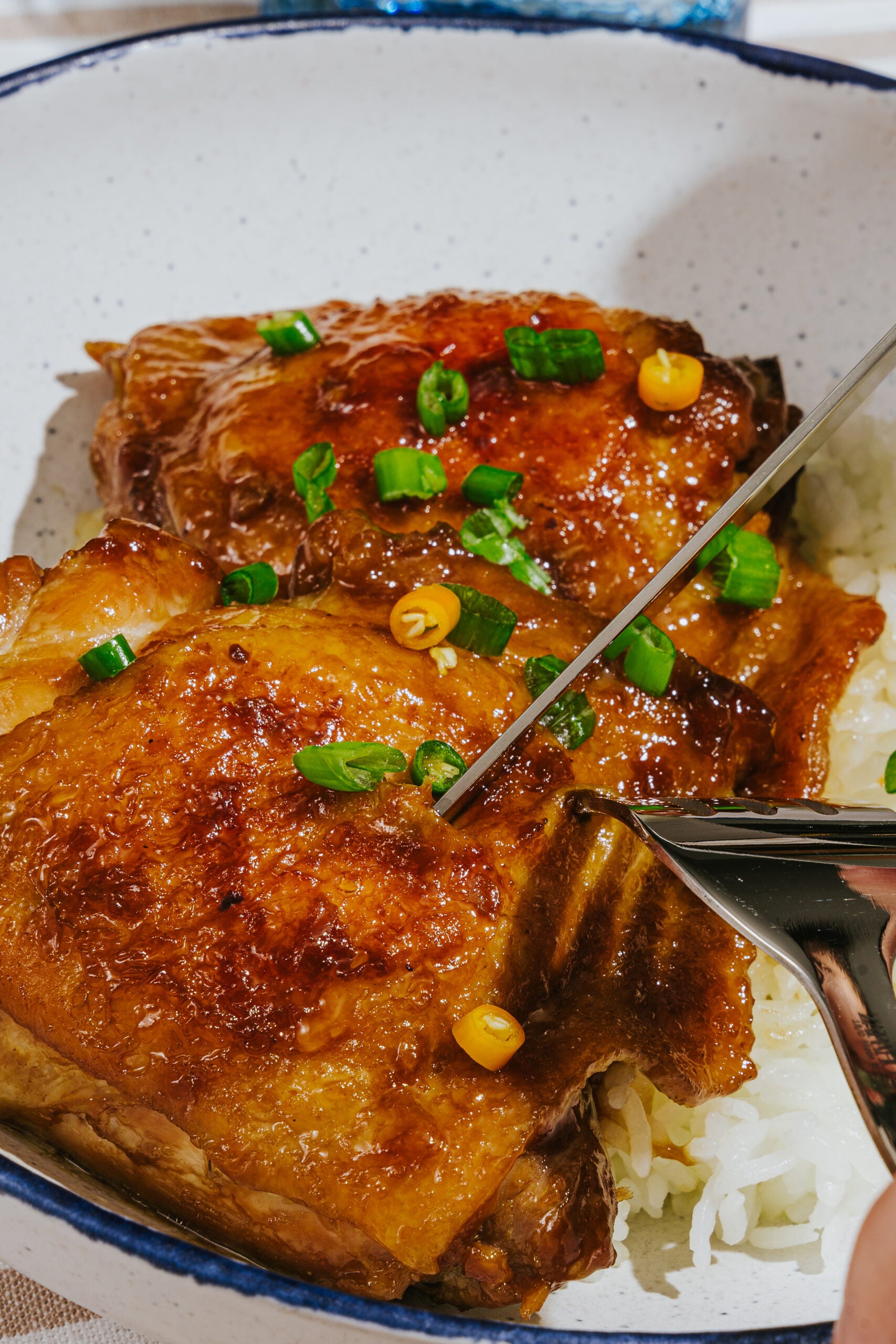
Salty, sweet, and covered in a glistening, sticky sauce, this chicken is one for your weekly rotation.
This is a recipe with several sources of inspiration. It began with my first dinner at Sophon, a new Seattle restaurant offering a blend of classic Khmer flavors as well as more contemporary dishes inspired by the Cambodian diaspora. Bon Appétit named it one of the best new restaurants of 2024, and after one bite of its kha sach chrouk, I understood why. The signature dish is a coconut-tamari-braised pork belly with a remarkably tender bite and a glossy, almost syrupy coating on the exterior. I went home determined to use these flavors in my own cooking.
While perusing the internet for coconut-braised meat recipes, I stumbled upon a few Vietnamese dishes, including caramelized pork (thit kho) and caramelized chicken (gà kho), both of which have a similarly sweet, salty, and coconutty flavor profile to kha sach chrouk. My recipe pays homage to all three of these dishes: tender chicken thighs braised in soy sauce and coconut with a sweet, sticky finish.
I begin by browning some skin-on chicken thighs—a cast iron skillet is preferable here for its wide, flat base and its nonstick properties, which help keep the chicken skin intact and prevent tearing. After the chicken is browned, I remove it from the pan and add shallots, garlic, and Thai chiles. I implore you—don’t skip the chiles! Not only do they add spice, they also add a deep and complex vegetal flavor. Once the aromatics begin to turn golden brown, the sauce ingredients are added, and the chicken is returned to the pan.
This dish is cooked partially covered, which allows the liquid to slowly reduce into a sticky sauce that coats the chicken. Because there is a relatively small amount of liquid in the pan, you’ll want to flip the chicken every 5 to 10 minutes. This may seem like unnecessary extra work, but it helps to directly infuse all that coconut flavor into the meat (especially the skin, which becomes the best part). Since this is essentially a braised dish, the skin of the chicken won’t become crispy. Instead, it absorbs the rich salty-sweet flavor of the braising liquid. The fat within renders, and the skin becomes sticky and full of flavor.

I’ll be honest, calling for only part of a can of coconut milk feels rather rude on my part—but an entire 14 ounce can not only takes a long time to reduce down but also adds an unnecessary amount of fat to the dish. If you can find a smaller 5.4 or 5.6 ounce can, it’ll come out to only slightly more than a half cup, so feel free to use the whole thing. Another option is to use coconut water in place of coconut milk. Coconut water is often used as a braising liquid in both Cambodian and Vietnamese cooking, and it will result in a less fatty final product (though you’ll miss out on a tiny bit of coconutty flavor).
Since this chicken is already so richly flavored, a side of steamed white rice is all that’s required to make it a satisfying meal. If I have extra time, I’ll whip up a quick salad or some simple sautéed greens. It’s one of those weeknight meals that feels a little extra special but isn’t overly fussy—it’s already part of my weekly dinner rotation.